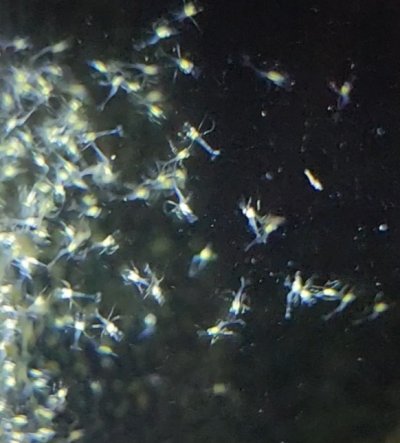- Joined
- Mar 27, 2020
- Messages
- 67
- Reaction score
- 32
Attempting to raise a clutch of skunk shrimp. I may not be successful but worth a shot. Not much time to prep as I discovered them after the lights went out on feeding night in the sps tank. I'm guessing the food and calm flow encouraged my shrimp to release them. I set them up the same way I raise Tigger pods, glass container with airline drip. Food I guess will be pods and live photo if they eat that. I have at least 300 of them collected so if one makes it I'd be plenty happy just to say I did it. Any suggestions would be welcomed especially with food. I only hatch pods for my mandarin so I don't have rotifers. See the video, awesome to find.















